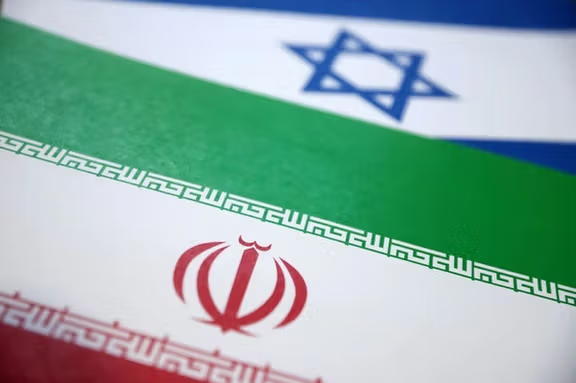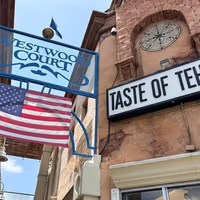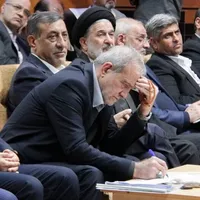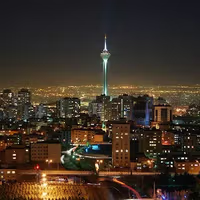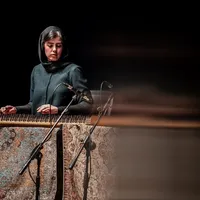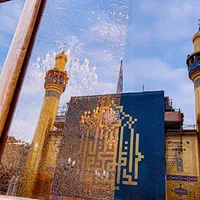Iranian mole helped Israel kill Hezbollah leader – Le Parisien
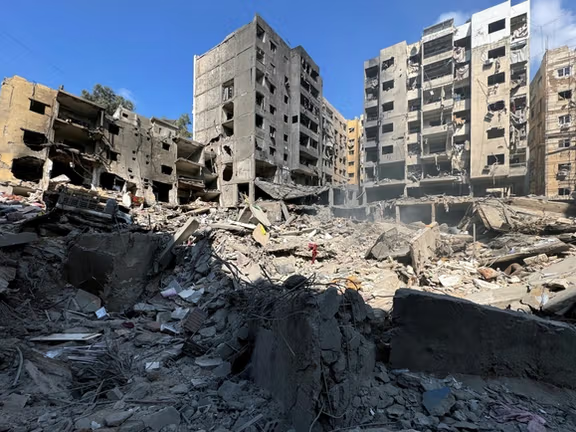
A Lebanese security source says an Iranian informant tipped off Israel about the whereabouts of Hezbollah leader Hassan Nasrallah before his assassination Friday.

A Lebanese security source says an Iranian informant tipped off Israel about the whereabouts of Hezbollah leader Hassan Nasrallah before his assassination Friday.
Nasrallah was killed in his highly secure underground headquarters, built under a complex of six buildings in the heart of Dahieh, the southern suburbs of Beirut, in a massive Israeli airstrike on Friday.
Using intelligence from an Iranian mole to ensure his presence before launching the deadly attack, “the Israelis went all out; they didn't want to miss their target," Le Parisien quoted the unnamed Lebanese security source as saying.
According to the source, the Iranian infiltrator informed the Israelis about the imminent arrival of the Shiite leader on Friday afternoon of Friday, a few hours before the strikes.
Israel’s F-35s, equipped with bunker-buster bombs, were reportedly waiting in Lebanese airspace for the target to arrive at the command center.
According to Le Parisien, Nasrallah arrived at his command center for an emergency meeting along with a commander of IRGC’s extraterritorial Quds Force regiment, shortly after the funeral of Mohamed Hussein Srour, a Hezbollah drone unit commander killed in an airstrike the day before.
Twelve other commanders were present for the emergency meeting with Nasrallah. Iran has confirmed the death of Brigadier General Abbas Nilforoushan, the deputy commander of the Revolutionary Guard for operations but he was not a member of IRGC-Quds Force.
The Israeli military waited until all were gathered in the secure underground room where Hezbollah used to plan its military operations before giving the order to strike. In total, Israeli F-35s dropped six two-ton bombs.
"This is the largest attack we've seen since 2006," the same security source said. The explosion was heard as far as downtown Beirut, and a thick cloud rose over Hezbollah’s headquarters. Only rubble remains in a giant 30-meter-deep crater. Two neighboring buildings were also destroyed.
Since the killing of the long-time Hezbollah leader and the decapitation of its command, the organization has gone silent. A report by the New York Times said Sunday that Iran’s immediate priority is to support Hezbollah regroup, including naming a successor, establishing a new command structure, and rebuilding a secure communications network.
Meanwhile, Israel continues to pound Hezbollah's military infrastructure as it strangles the organization before it has time to regroup.
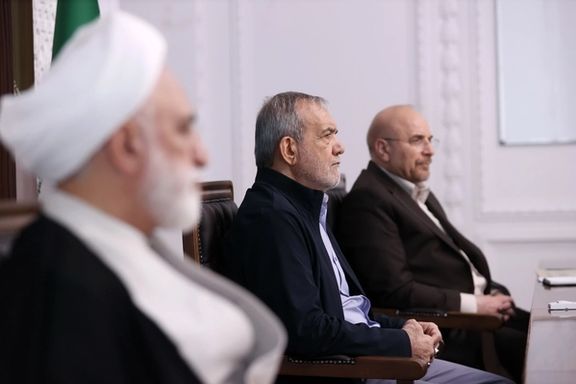
A conservative politician and several centrist figures have publicly offered key advice to President Pezeshkian, raising questions about why it was shared in the media rather than in private discussions.
Former conservative lawmaker Mohsen Kouhkan has urged President Pezeshkian and Vice President Mohammad Reza Aref to prevent their close relatives from interfering in politics, warning that some individuals may exploit their family ties for personal gain.
In an interview with Khabar Online, Kouhkan referred to cases including Pezeshkian's son-in-law Hassan Majidi's appointment as the executive assistant to Pezeshkian's chief of staff and previous accusations about his daughter's influence in the government-owned Petrochemical Company of Iran, as well as rumors about Vice President Aref's son's intervention in the affairs of the government, and warned the president and his aides not to allow their relatives to meddle with the affairs of the state.
Amid the silence of both Pezeshkian and Aref, a presidential supporter stated in an interview that he has seen no "destructive" interference by top officials' relatives in state affairs. He accused those raising concerns of nepotism of attempting to stir political trouble to undermine the officials.
However, such opinions could either amplify the accusations or reveal a disconnect between administration officials and the country’s political elite. It also highlights the failure of Pezeshkian's vision for national accord, even among prominent politicians.
The idea od ‘national accord’ heralded by Pezeshkian has been criticized as a political jargon for cooperation among Islamic Republic factions rather than a true social contract with the populace.
In another development, former Tehran mayor Gholamhossein Karbaschi, a key supporter of Pezeshkian, warned the President about the concept of national accord, emphasizing that it should encompass all branches of government, not just a small sector. He stressed that Pezeshkian must engage with Supreme Leader Ali Khamenei, the Majles, the Judiciary, the IRGC, the Ministry of Intelligence, and other key institutions to address the country’s challenges effectively.
In an interview with Fararu, Karbaschi also reminded that Pezeshkian has not done anything so far to stand by his promise to provide easy access to the Internet and social media. Furthermore, he said that the current situation of the Internet in Iran is a torture for citizens.
Fararu, in its own interpretation of the issue, noted that Iranian society is weary of the current situation, and some politicians believe that Pezeshkian’s proposal for national accord is an attempt to address the challenges he has pledged to resolve.
In still another development, the former head of Iran's state TV and a brother of former President Akbar Hashemi-Rafsanjani, Mohammad Hashemi told reportersthat the meaning of national accord has been already distorted by those who do not want the idea to take hold.
Hashemi, a founding member of the centrist Executives of Construction Party, remarked that some politicians are deliberately ignoring both the problems and the idea of national accord as a solution. He stated, "Iran, with over 88 million people, has a rich diversity of cultural, social, political, religious, and ethnic backgrounds. It's unrealistic for the government to satisfy every one of those 88 million citizens, and both the government and its President must recognize this."
He observed, "The President likely understands this, which is why he has referred to national accord as a 'super project.'" He explained that national accord aims to engage all Iranians in political, social, and economic activities. Hashemi also quoted Pezeshkian, who recently said, "If we exclude individuals based on their past stances, we'll find that no one can be deemed entirely innocent."
While Hashemi acknowledged that Pezeshkian seems to grasp the concept of national accord, he stressed the urgency of the nation’s problems and remarked, "Pezeshkian should at least outline what steps are needed to achieve this super project and how much time it will take."

The Islamic Republic should close the Strait of Hormuz in the Persian Gulf and build a nuclear bomb, Iran's ultra-hardliners have been demanding on social media in the wake of Israel’s killing of Hassan Nasrallah.
In recent days, ultra-hardliner social media activists, largely supporters of former nuclear negotiator Saeed Jalili, have been criticizing President Masoud Pezeshkian and his government for their "inaction" against Israel, despite its recent deadly operations in Gaza and Lebanon. They have suggested that Iran is avoiding confrontation with Israel.
Ultra-hardliners have, however, remained conspicuously silent on the fact that the decision to launch a military response against Israel ultimately rests with Supreme Leader Ali Khamenei, as commander-in-chief of the Armed Forces, not with the president or parliament.
In a series of X posts Saturday after Nasrallah’s demise was confirmed, Khamenei called on all Muslim nations to stand by the people of Lebanon but fell short of vowing revenge by Iran for his killing and the killing of Ismail Haniyeh in Tehran in July as hardliners and ultra-hardliners had expected.
“Only breaking red lines [by us] can stop [the enemy from] breaking [our] red lines,” a Jalili supporter tweeted while suggesting that the Islamic Republic should end its so-called “strategic patience” and build a nuclear bomb, threaten to leave the UN and refuse to allow the passage of Western commercial vessels through the Strait of Hormuz for a week by holding a week-long naval drills.
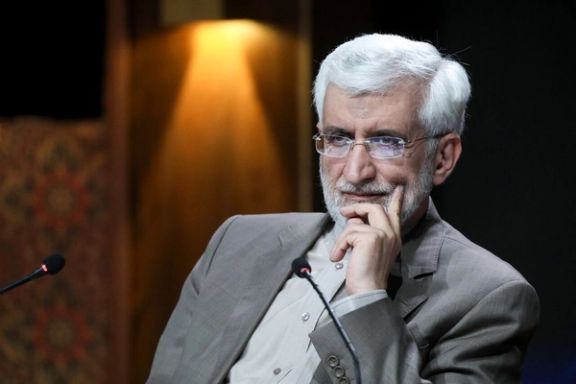
“Why can Yemen block the main passageway of oil [in the Bab al-Mandab Strait] but we are not doing the same in the Strait of Hormuz?” an ultra-hardliner asked in a tweet Saturday.
Another ultra-hardliner suggested that Iran must target the economic interests of the Western, Israeli, and Arab countries in the region before taking any other action.
“Iran's first step should be closing this strategic passageway to prevent an all-out war in the region,” he tweeted while suggesting that failing to take such a step may bolden Israel to make the “strategic mistake” of attacking Iran.
Iranian officials have on many occasion in the past threatened to close the Strait of Hormuz, but this can lead to a clash with the US and other naval forces, leading to a regional war.
“Whether we like it or not, Iran must direct its military doctrine towards building a nuclear bomb. Iran has wasted the cards it held in the past and the only card that it holds now is a nuclear bomb. This is the only means to bring the West to the negotiation table,” Sohrab Salehi, a university professor of medicine who also supports ultra-hardliners on social media tweeted Saturday.
“You gentlemen in charge, one must have nuclear power against such an enemy. Test the first nuclear bomb for the sake of Iran's security and in reaction to the actions of the notorious regime [of Israel],” Mohammad-Mehdi Dehghannejad, an ultra-hardliner social media activist tweeted.
These demands have drawn criticism from other netizens, who argue that closing the Strait of Hormuz would only escalate tensions. They also point out that building a nuclear bomb, despite the official claim that Khamenei has issued a religious ban on weapons of mass destruction, including nuclear arms, would not shield the Islamic Republic from Israel.
“In the highly unlikely case that we succeed [in building a bomb], how can a system that can’t protect its highest officials manage to guard that bomb? Or let’s say you built it...how are you going to make a deal using the nuclear bomb card?” a netizen on X asked the advocates of Iran becoming nuclear to protect itself against Israel.
A netizen on X contended that ultra-hardliners will brag about the closure of the Strait of Hormuz for some time but their ruckus will soon be forgotten as in the past.
Meanwhile, Abdolreza Davari, a former ultra-hardliner and close confidante of Mahmoud Ahmadinejad, who supported Pezeshkian over Saeed Jalili in the presidential election, offered a surprising assessment of the situation and Hamas's role in it following Nasrallah’s death.
Highlighting the upcoming anniversary of the October 7 attack that ignited the latest round of conflict, Davari argued in a tweet that an analysis of the “cost-benefit of the operation and its impact on the Resistance Front and the Zionist enemy” reveals that the operation resulted in “nothing but pure damage.”
In another tweet, Davari suggested that Iran should reassess the factors behind the “devastating blow” to the Resistance Front and prioritize “pursuing Iran's interests” in line with the shifting dynamics of the region in the post-Nasrallah era.

Iranian Agriculture Minister Gholamreza Nouri has announced a 20% increase in raw milk prices, adding to the mounting challenges faced by the Iranian public amid persistent inflation and economic difficulties.
The new price, set at 18,000 tomans per kilogram ($0.30), follows a directive from First Vice President Mohammad Reza Aref and comes amid rising inflation and escalating living costs for Iranian households.
The Market Regulation Headquarters approved the price hike last week, raising the price from 15,000 tomans ($0.25) to 18,000 tomans ($0.30), although the decision was delayed by a week. This increase has sparked concerns across the dairy industry, particularly about its impact on related products.
Unlike in the US or the EU, where market forces and industry decisions primarily drive milk prices, in Iran, the government, through officials like the Minister of Agriculture, directly intervenes to set and adjust prices, reflecting the state's significant role in managing essential goods within the economy.
With the minimum wage in Iran at around $120 per month, many families, particularly those with children, are finding it increasingly difficult to afford basic living expenses, as much of their income is consumed by rent and other necessities.
Ali Ehsan Zafari, Chairman of the Dairy Products Union, emphasized that the most significant price increases will affect products like cheese, while the price of milk itself will see a more modest rise. Zafari also noted that overall dairy product prices are expected to increase by around 25%, further exacerbating an already declining trend in dairy consumption.
According to Mohammad Reza Bani Taba, spokesperson for the Iranian Dairy Products Industry Association, Iran’s per capita dairy consumption has dropped to less than 70 kilograms annually. This is a sharp decline from the period before 2010, when per capita dairy consumption in Iran ranged between 100 and 130 kilograms.
As milk prices rise, further declines are expected, with potentially severe consequences for both the livestock and dairy sectors. Zafari warned that continued price increases could drive further reductions in dairy consumption, putting additional strain on the already struggling industries.
Farmers have also voiced their dissatisfaction, arguing that the last price adjustment in May 2023 was insufficient to cover their rising costs. Mojtaba Ali, CEO of the National Cooperative Union of Iranian Dairy Farmers, stressed that the price should have been increased earlier in the year to better reflect the escalating expenses faced by farmers.
Farmers, he noted, have suffered financial losses for the past seven months due to low milk prices, despite the inflationary pressures that have affected the agricultural sector.
Meanwhile, the cost of basic goods like bread has surged sharply. The Tehran Traditional Bakers Union reports that the price of lavash has risen by 40%, while the cost of sangak has increased by 66%. The Ministry of Interior has approved these hikes, which add to the financial strain on Iranian households. With one in three Iranians now living below the poverty line, many families are struggling to make ends meet.
As the new school year begins, parents are facing additional financial pressures, with stationery prices rising by 35% and school bus fees increasing by 45%.

The 64-year-old leader of Hezbollah, Hassan Nasrallah, was killed Friday in an Israeli airstrike on southern Beirut, 42 years after he became the representative of Iran’s ruler, Ruhollah Khomeini, in Lebanon at the age of 21.
“His eminence Sayyed Hassan Nasrallah, Hezbollah’s secretary-general, has joined his fellow great martyrs whom he had led for 30 years from one victory to another,” Hezbollah said in a statement.
Nasrallah’s death occurs amidst an escalation in the nearly year-long conflict between Israel and Hezbollah that intensified in September after Israel indicated it could no longer tolerate insecurity in its border region with Lebanon.
Hezbollah has been launching rockets, missiles, and drones into northern Israel in support of Palestinians in Gaza and Hamas, which is an allied Iran-backed militant group. In response, Israel has intensified its airstrikes and conducted targeted killings of Hezbollah commanders while threatening a broader military operation.
The past ten days marked the deadliest period in Lebanon since the grueling month-long conflict between Israel and Hezbollah in 2006.
Initially, thousands of pagers and walkie-talkies used by Hezbollah members exploded across various locations in Lebanon, resulting in scores of fatalities and nearly 3,000 injuries. Lebanon attributed the explosions to Israel, although Israel did not confirm or deny involvement. Nasrallah vowed to retaliate but he was killed before he could implement any counterattack plan.
Nasrallah was born on August 31, 1960, in Lebanon. His father was a fruit vendor, and he was the eldest child in a family of 11. His birth and childhood were marked by the conflicts between Israel and Lebanon. In 1974, Musa Sadr and Mustafa Chamran, two Iranian supporters of Khomeini in Lebanon, initiated the Amal movement, and Nasrallah joined the movement in 1975 at the age of 15.
At 16, he went to Iraq. In 1979, coinciding with the Iranian Revolution, Nasrallah completed his preliminary religious studies in Najaf. This period coincided with pressure from Saddam's government on Shia clerics. Nasrallah returned from Najaf to Baalbek, Lebanon.
After the 1979 revolution in Iran, Nasrallah met with Khomeini in 1981. Khomeini granted him permission to engage in religious and civil affairs. At this time, Nasrallah was only 21 years old.
In 1982, amid the Iran-Iraq War, Hezbollah was formed with the planning and support of the Islamic Republic. Tehran's propaganda apparatus presented this group as one influenced by the Islamic Revolution of 1979 in Lebanon from the outset.
Nasrallah joined Hezbollah at its inception. In 1989, around the time Ali Khamenei was selected as Supreme Leader, he traveled to Iran to study at the Qom seminary.
From the establishment of Hezbollah until 1991, Sobhi Toufaily was the secretary-general of Hezbollah. In 1991, the executive council of Hezbollah removed him from his position and replaced him with Abbas al-Musawi, Nasrallah's former teacher.
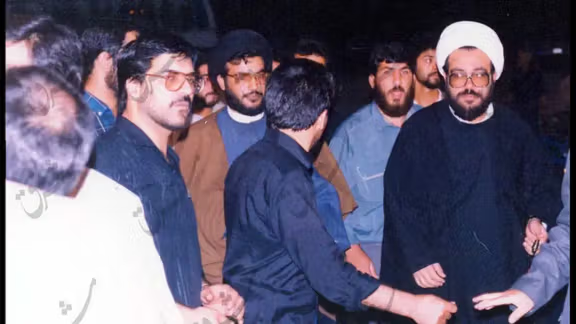
Musawi was the secretary-general of Hezbollah for less than a year. In February 1992, he was killed in an Israeli helicopter attack. The 31-year-old Hassan Nasrallah succeeded him in Lebanon.
Immediately after his appointment, Nasrallah traveled to Tehran and met with Ali Akbar Velayati, the then-foreign minister of the Islamic Republic. During this meeting, Velayati emphasized that the relationship between the Islamic Republic and Hezbollah was “fraternal” and would continue.
At the beginning of his work as secretary-general, Nasrallah managed to position Hezbollah as a political entity. After Hezbollah's participation in elections, he traveled to Tehran to meet Khamenei and presented a report on his political activities in Lebanon. Khamenei praised his political success and called for greater support for Hezbollah.
Nasrallah's trips to Tehran continued. After the relatively moderate Mohammad Khatami's won Iran's presidential election in the 1997, the relationship between the Islamic Republic and Hezbollah remained strong. In October 1997, a few months after Khatami's presidency began, Nasrallah was among his first foreign guests. In a meeting on October 13, 1997, Khatami expressed condolences for the death of Hadi Nasrallah, Nasrallah's eldest son, emphasizing the Islamic Republic's comprehensive support for Hezbollah and calling it a “symbol of resistance.”
On July 7, 2000, Nasrallah returned to Tehran again. During this visit, he also had a side event; at the invitation of Mustafa Moeen, the Minister of Science in the “reformist” government, he visited Tarbiat Modarres University.
Moeen presented honorary membership in the university's faculty to Nasrallah, saying, "It is the pride of our higher education system that we awarded our first honorary doctorate to Nelson Mandela and today we bestow honorary membership upon Sayyid Hassan Nasrallah."
Nasrallah's relationship with the Islamic Republic during Mahmoud Ahmadinejad's presidency remained strong and close, as it had been in the past. The year 2005 was a pivotal one for Nasrallah. Following the assassination of Lebanese Prime Minister Rafic Hariri, Hezbollah came under suspicion because Hariri had made efforts to limit the political and military power of Hezbollah.
Nevertheless, Hezbollah managed to succeed again in the parliamentary elections. After this victory, in June 2005, he traveled to Iran.
During his visit to Tehran, Nasrallah met with Khamenei. This was Nasrallah's last official trip to Tehran. Once, in 2021, reports emerged about his secret visit to Tehran, but this trip was never confirmed.

After Nasrallah stopped appearing in public, he began to express Hezbollah's views through video speeches.
Reaction to the Green Movement
In 2010, a year after the Green Movement protests in Iran—where one of the slogans was "Neither Gaza, nor Lebanon, my life is for Iran"—videos of Nasrallah surfaced. In one of them, he emphasized the religious ideology of the Islamic Republic, stating, "In Iran today, there is no such thing as Persianization or Persian civilization. What exists in Iran is Islamic civilization. What exists in Iran is the religion of Muhammad."
Nasrallah continued by praising the leaders of the Islamic Republic, stating, "The founder of the Islamic Republic was an Arab father and the son of the Prophet of God, Muhammad, may God bless him and his family. Today, the leader of the Islamic Republic, Ali Khamenei, is the son of the Prophet of God."
In the second video, Nasrallah addressed the protests following the 2009 elections, stating, "Some dreamt of the end of the Islamic Revolution and the overthrow of the Islamic Republic, but these dreams are mere illusions. The Iran that many have exaggerated recent events about—I emphasize—remains strong. Its system, government, people, and elites are blessed with wise, courageous, compassionate, and capable leadership, under the historic guidance of Ali Khamenei."
Funding from Iran
In a speech in July 2016, during the peak of President Hassan Rouhani's government's efforts to re-establish relations with the West, Nasrallah pointed to financial support from the Islamic Republic, stating, "The budget, expenses, and weapons of Hezbollah come from the Islamic Republic."
He continued, "As long as Iran has money, it means we have money." These remarks by Nasrallah created difficulties for the Rouhani government at that time, both domestically and in terms of its image around the world.
On Mahsa Amini
About two weeks after the killing of Mahsa Amini for mandatory hijab, Nasrallah reacted to the protests in a speech on September 30, 2022. He said, "Due to the ambiguous death of Mahsa Amini, Western countries have made a fuss, while Tehran has emphasized that it will conclude the investigations without any bias."
Nasrallah pointed to the explosion of a Shiite educational center in Afghanistan, saying, "More than 50 innocents were martyred, yet no one made the slightest noise, but regarding Mahsa Amini's death, this incident has been widely exploited."
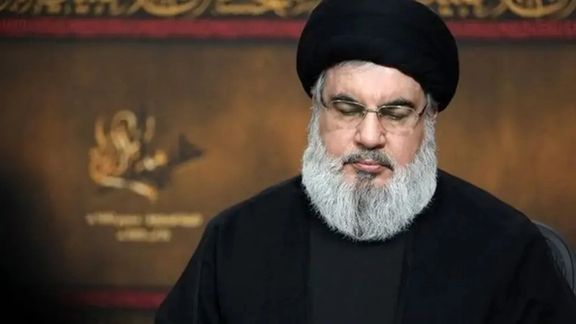
Following the death of Hassan Nasrallah, the Secretary-General of Hezbollah in Lebanon, reactions have emerged both from within Iran and beyond.
Many social media users and viewers of Iran International expressed joy at his passing, with some even wishing the same fate for Supreme Leader Ali Khamenei, the autocratic ruler of Iran.
Khamenei announced a five-day period of public mourning for Nasrallah. However, videos sent to Iran International reveal a starkly different reaction from some Iranians, who were seen celebrating Nasrallah's death by distributing pastries in the streets and even raising toasts. In one video, a citizen handing out pastries mockingly addressed Khamenei, saying, 'It seems these people are very close to you. You’re hiding today, but what about tomorrow?'"
In other messages shared with Iran International, Iranians directed scorn towards Khamenei and Hezbollah. "You took from the mouths of Iranians and gave to Hezbollah. Now, with the death of Nasrallah, your dreams have been shattered," said one citizen. Another remarked, "Nasrallah was just a puppet; the head of this octopus is in Iran."
A different one addressing Khamenei, mentioning all his prominent allies who have been assassinated in recent years: "Take a look—Nasrallah, Haniyeh, Qasem Soleimani, Raisi, Zahedi. What else do you want? What happened? How much of your bluster is only for the people? You only know how to bully your own people... Soon, your turn will come too." Another added, "Not only was your Nasrallah killed, but billions of dollars of the Iranian people’s money were wasted. Khamenei, I foresee a day when they will come for you as well."
Political commentator Ali-Hossein Ghazizadeh told Iran International, "History has shown that anyone who tries to save Hamas not only fails, but also risks being pulled into collapse alongside it."
Morteza Kazemian, another commentator, noted that Nasrallah’s death marks a new era for the Islamic Republic, where it must either “abandon its ambitions or adopt a pragmatic stance regarding Israel.”
Meanwhile, in central Tehran, a group of pro-government protesters gathered, carrying posters of Nasrallah and Palestinian flags, chanting slogans like “Death to Nasrallah's enemy.” Some demonstrators also warned of Israel's destruction, with one protester saying, "We have heard the message clearly (the killing of Nasrallah). Israel will be destroyed, Israel is finished for sure, the oppressor Israel will go."
A banner displayed on a building read in English, Farsi, and Hebrew, “We will seek revenge. You can't imagine where or when." Another protester remarked, "It is certainly the fault of Islamic countries because, as the Supreme Leader said today in his message, this rabid dog is taking advantage. If we don't attack, it will want to invade all Islamic countries. Hopefully, with the help of God, we will unite, and we'll see Israel's destruction very soon."
University professor Majid Nasiri, speaking to AFP during the protest, said that “Through the martyrdom of Sayyed Hassan Nasrallah, I sensed we were getting closer to the destruction of the Zionist regime because more martyrdom makes people of the world more aware and more hateful towards the Zionist regime.”
Another protester, Mahboubeh Ansari, told reporters, "I am here to slap Israel in the face and say we are here to support Palestine, we support Sayyed Hassan Nasrallah."
Videos released on social media also show that a group of government supporters gathered in front of Ferdowsi University of Mashhad, chanting slogans. Using loudspeakers, they repeated the words of Ayatollah Khomeini: "Shed the blood, and our nation will become more awakened."
A group of Shia seminary students also staged a rally in Qom, symbolically wearing shrouds as a display of their readiness for martyrdom in response to Nasrallah's death.
In a message to Iran International, one individual sarcastically urged Khamenei to send those who have registered to fight against Israel sooner, so "we can have even more joy."
Another citizen condemned Nasrallah as a “terrorist” and expressed hope that a similar event would occur in Tehran, “bringing happiness to many.”
Additionally, Syrians were also seen celebrating the death of Nasrallah, with videos circulating online showing people in Syria distributing sweets on Friday night.
